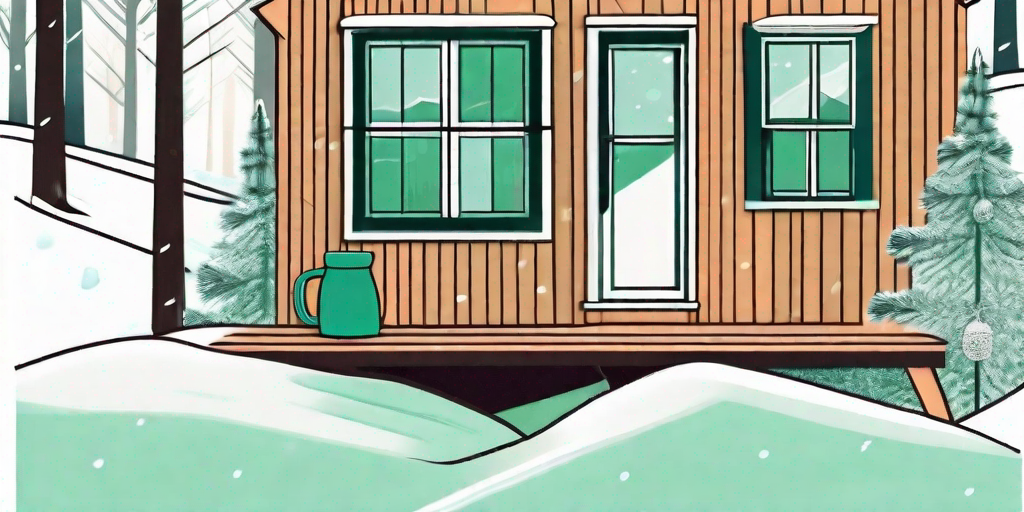
Winter, the season of snowflakes and hot chocolate, can be a real challenge for those living in the mountains. But fear not, dear reader, for the mountain laurel is here to save the day! This versatile plant, with its beautiful flowers and hardy nature, can be your best friend during the frosty months. So, buckle up and get ready to learn how to survive winter with mountain laurel, while staying as cozy and chic as a snow leopard in a cashmere sweater.
Understanding the Mountain Laurel
Before we dive into the nitty-gritty of surviving winter with mountain laurel, let's take a moment to appreciate this wonder of nature. The mountain laurel (Kalmia latifolia), native to the eastern United States, is a hardy evergreen shrub that thrives in the harshest of conditions. Its beautiful pink or white flowers bloom in late spring, adding a splash of color to the otherwise monotonous winter landscape.
But the mountain laurel is not just a pretty face. It's a survivalist's dream, with its thick, leathery leaves and dense branches providing excellent shelter and insulation from the cold. Plus, its bark and wood are excellent sources of fuel for those cozy winter fires. So, in essence, the mountain laurel is like the Swiss Army knife of plants - versatile, reliable, and always ready to lend a hand (or a branch).
Using Mountain Laurel for Shelter
Building a Mountain Laurel Shelter
When it comes to surviving winter in the mountains, shelter is paramount. And the mountain laurel, with its dense branches and thick foliage, is perfect for building a makeshift shelter. Start by finding a sturdy mountain laurel shrub, preferably one with a dense canopy and thick branches. Then, using a sharp knife or a saw, cut off some of the lower branches to create a space underneath the shrub.
Next, gather some fallen leaves and pine needles and spread them on the ground under the shrub. This will provide insulation from the cold ground. Finally, use some of the cut branches to create a makeshift door for your shelter. And voila! You have a cozy, insulated shelter that will keep you warm and dry during the cold winter nights.
Insulating Your Home with Mountain Laurel
If you're lucky enough to have a cabin or a house in the mountains, you can use mountain laurel to insulate your home. The thick, leathery leaves of the mountain laurel are excellent insulators, and can be used to plug gaps and cracks in your walls and windows. Simply gather a bunch of leaves, crush them into a pulp, and use them to fill any gaps or cracks. This will help keep the cold air out and the warm air in, keeping you cozy and warm all winter long.
Additionally, you can use the branches of the mountain laurel to create a windbreak around your home. This will help reduce the wind chill factor, making your home feel warmer. Just make sure to trim the branches regularly to prevent them from becoming a fire hazard.
Using Mountain Laurel for Fuel
Nothing beats the warmth and coziness of a crackling fire during the cold winter nights. And the mountain laurel, with its dense wood and thick bark, is an excellent source of fuel. The wood burns slowly and steadily, providing a long-lasting source of heat. Plus, the bark can be used as kindling to start the fire.
Just remember to use a sharp axe or a saw to cut the wood, and always wear protective gear to prevent injuries. And of course, never leave a fire unattended, especially in the forest. We want to stay warm, not start a forest fire!
Staying Chic with Mountain Laurel
Now that we've covered the practical aspects of surviving winter with mountain laurel, let's move on to the fun part - staying chic! The beautiful flowers of the mountain laurel can be used to create stunning winter accessories. Think flower crowns, boutonnieres, and even decorative wreaths for your home. Plus, the leaves can be used to create unique patterns on fabric, adding a touch of nature to your winter wardrobe.
So, whether you're attending a winter wedding or just want to add a touch of nature to your home, the mountain laurel has got you covered. Just remember to pick the flowers and leaves responsibly, and always leave enough for the plant to continue growing.
FAQs
- Is mountain laurel safe to touch?
Yes, mountain laurel is safe to touch. However, all parts of the plant are toxic if ingested, so it's best to keep it out of reach of children and pets.
- Can I use mountain laurel for cooking?
No, mountain laurel is not safe for cooking. The plant contains a toxin called andromedotoxin, which can cause serious health problems if ingested.
- How can I identify mountain laurel?
Mountain laurel can be identified by its thick, leathery leaves, dense branches, and beautiful pink or white flowers. The leaves are dark green on top and lighter underneath, and the flowers have a unique star-shaped pattern.
So, there you have it - your comprehensive guide to surviving winter with mountain laurel. With a little creativity and a lot of mountain laurel, you can not only survive the winter, but do it in style. So, go ahead and embrace the cold, for the mountain laurel has got your back!















